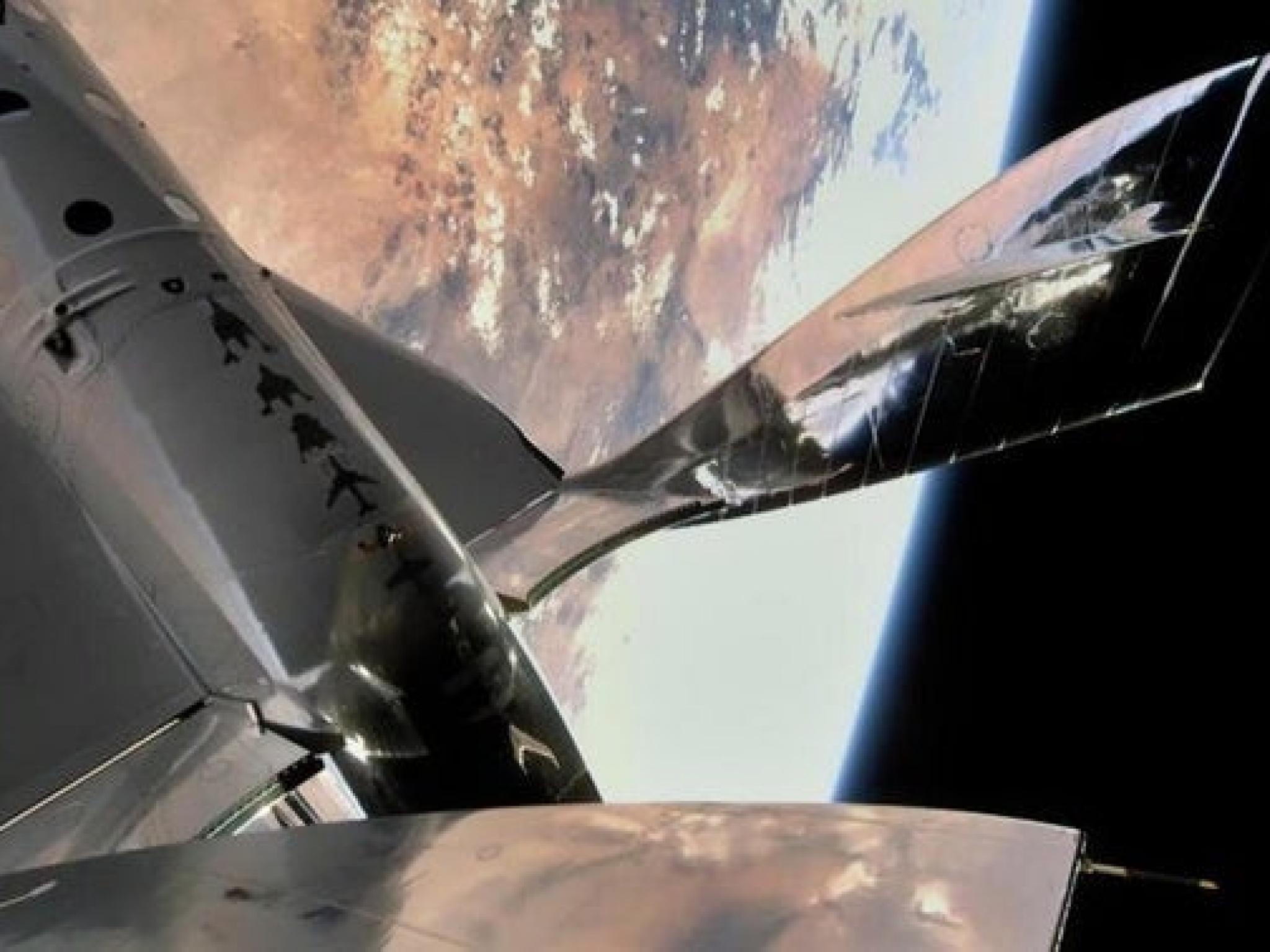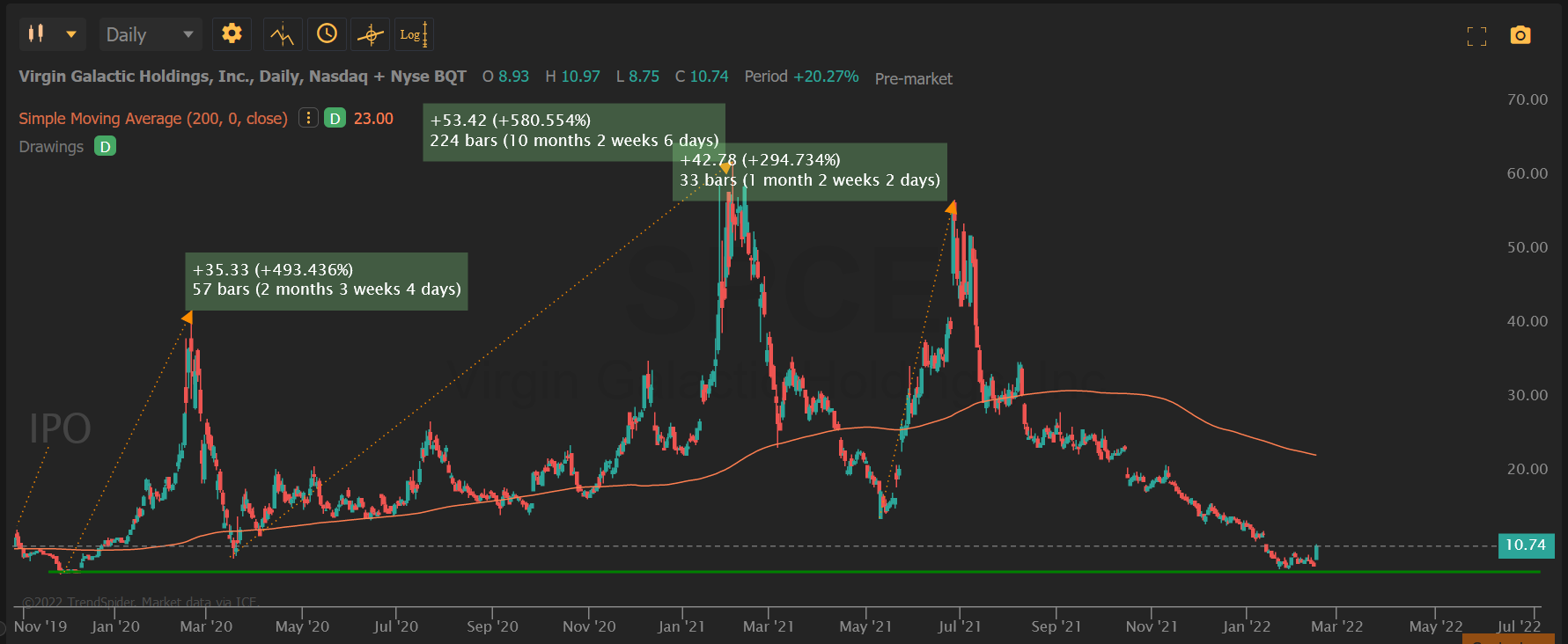
Sir Richard Branson's space tourism company Virgin Galactic Holdings Inc. (NYSE:SPCE) had its official IPO on the New York Stock exchange on October 28, 2019. The official IPO followed the merger with a public-traded special-purpose acquisition company (SPAC), which had its IPO in September 2017.
The price per share rallied on its IPO date to $12.93. Then, the company lost half of its value, and the price per share collapsed to $6.90 within one month. Once the lows of $6.90 were in, the stock rallied up to $42.49 (February 2020), just to collapse again down to $9.06 (March 2020).
This market dynamic is still one of the main characteristics of the stock. For example, Virgin Galactic rallied from its lows of $9.06 (March 2020) to $62.80 (February 2021), fell back to the lows of $14.27 (May 2021) and rallied again back up to $57.51 (June 2021).

All of the rallies have one catalyst in common. The company affirmed that space flights would become possible. At the IPO, the company planned to begin commercial flights in 2020 and become profitable by 2021. But instead, various delays happened and subsequently led to stock price declines.
Then, after Sir Richard Branson's successful flight in July 2021, many tickets were sold, but the start of commercial flights saw delays again. As a result, the price per share dropped from >$50 to its recent lows of $8.75 (January 24, 2022).
Will The Price Per Share Go To The Moon Now?
Now, we finally come closer to the first commercial flights since ticket sales to the public start today, February 16, 2022. Virgin Galactic's CEO Michael Colglazier indicated the plan to have the first 1,000 customers on board by the end of the year.
The price per ticket for a 90-minute flight is set to $450,000. An initial deposit of $150,000 is needed to reserve the ticket, and the final payment of an additional $300,00 has to be made before the flight.
The revenue earned for the first 1,000 flights will be 450 million, which can help the company to get in positive income territory. The announcement was exceptionally well-received by investors. As a result, the stock had one of the most significant percentage daily gains and closed +31.94% higher at $10.74 on Thursday. 182.25M shares were traded on February 15, 2022, the 2nd highest daily trading volume in history.
But it will need much more to send the stock back to all-time highs. The key question is how many people can afford a ticket price of $450,000 for a 90-minute event and suborbital flight at about 53 miles, especially when Elon Musk's SpaceX or Jeff Bezos' Blue Origin start sending people across the Kármán line, the internationally recognized boundary of space at 62 miles.
Virgin Galactic focuses on space tourism only, while Elon Musk and Jeff Bezos plan for more. Therefore the income potential is limited, and so is the Virgin Galactic stock price long-term potential.
However, the past has proven that the announcements of commercial flights alone can send the stock to new highs since investors anticipate growth potential while disregarding the limited income potential.
In the short term, the high short float of over 20% can boost the price per share in the next few days. The chances are that various investors who started short selling stocks of Virgin Galactic now have to cover short positions if the stock rises further, which will lead to even higher stock prices (short squeeze). Another aspect is that it is impossible to invest in Elon Musk's SpaceX and Jeff Bezos' Blue Origin by buying shares of those companies right now. Virgin Galactic is the only stock-exchange listed company of those three.
Investors can expect volatility, and all eyes will be on the official launch of the first commercial flights.
Alexander Voigt is the Chief Executive Officer and founder of daytradingz.com. He does not hold any positions in the mentioned stocks.







